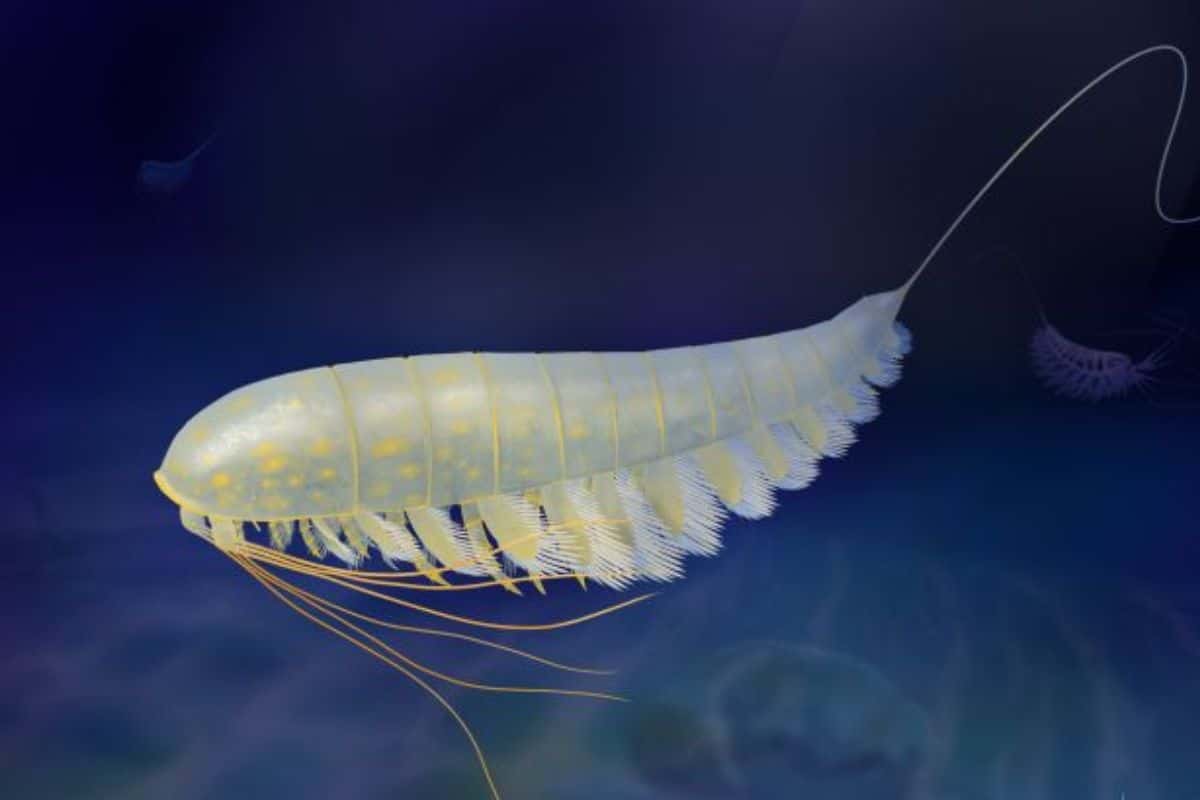
A breathtaking and unusual find in New York State has revealed a 450-million-year-old fossil, shedding light on the evolutionary development of arthropods.
This extraordinary specimen, known as Lomankus edgecombei, is identified as a new species within the extinct class of Megacheirans, which were characterized by their large, claw-like appendages used for capturing prey.
An Exceptional Discovery: The Golden Fossil
Unlike conventional fossils formed from minerals encasing organic remains, Lomankus edgecombei was preserved in an exceptionally rare and striking manner. Its body has been replaced by pyrite, often referred to as fool’s gold.
This distinctive preservation process, known as pyritization, allows for the fine details of the creature to be maintained in incredible three-dimensional clarity.
The fossils originated from the Beecher’s Trilobite Bed, a Lagerstätte renowned for its incredible preservation of ancient life. Lagerstätten sites are exceedingly rare and provide an extraordinary insight into prehistoric times, where fossils are so well-preserved that they appear almost lifelike.
Understanding Pyritization in Fossil Preservation
Pyritization is a unique fossil preservation method that occurs when organic material decomposes in an anaerobic environment thanks to the action of sulfate-reducing bacteria. These bacteria produce hydrogen sulfide, which interacts with surrounding iron to form pyrite.
“Today, pyrite is created by sulfate-reducing bacteria that decompose organic material in the absence of oxygen and generate hydrogen sulfide,” explains Luke Parry, a paleobiologist.
In the case of Lomankus edgecombei, this process allowed its features to remain remarkably well-preserved. The pyrite kept its delicate structures intact, providing unprecedented insight into the anatomy of this ancient organism.
Insights Into Arthropod Evolution
The discovery of Lomankus edgecombei is noteworthy not only for its preservation but also for the insights it offers into the evolutionary trajectory of arthropods. It belonged to the Megacheiran class, a group of arthropods that thrived during the Cambrian period. However, by the early Ordovician period, Megacheirans were declining, making L. edgecombei one of the last remaining species from this lineage.
This fossil reveals that the frontal appendages, which were once instrumental in prey capture in other Megacheirans, had significantly evolved in L. edgecombei. These appendages, sometimes referred to as “great appendages,” became much smaller and appeared to serve new purposes.
A Glimpse Into Prehistoric Life
This exceptional find serves as a reminder of how important rare fossil discoveries are in piecing together the story of life on Earth. The pyritized fossils from Beecher’s Trilobite Bed present an unparalleled opportunity for detailed study, offering insights into ancient organisms and their biological and evolutionary narratives.
The remarkable preservation of Lomankus edgecombei underscores the value of examining ancient life to gain a deeper understanding of the evolutionary processes that have led to the rich diversity of life we witness today. Through thorough analysis of these fossils, researchers are able to trace the evolutionary developments that resulted in modern arthropods.


The Evolutionary Importance of Megacheirans
The Megacheirans were a prominent class of arthropods during the Cambrian era, featuring a diverse range of species that utilized their large appendages for prey capture. However, the early Ordovician marked a period of decline for the Megacheirans, signifying the end of a significant era.
The discovery of Lomankus edgecombei provides a glimpse into the latter phases of their evolutionary journey. The anatomical adaptations observed suggest that even as this group declined, it continued to evolve and adapt its appendages to fulfill new roles.
“Lomankus illustrates that megacheirans not only survived beyond the Cambrian but also diversified and evolved, demonstrating that the once formidable great appendage had transitioned to a completely different function,” added Parry.
Today, arthropods stand as the most diverse group of animals on the planet, with their appendages evolving to accommodate a multitude of functions across insects, arachnids, and crustaceans.









